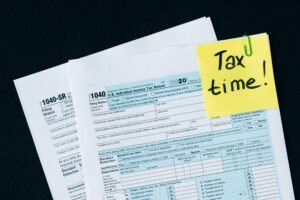Retirements Credits and Deductions
Employees with low and moderate incomes may start saving for retirement now and qualify for a special tax credit in 2022 and subsequent years.
The Saver’s Credit, also known as the Retirement Savings Contributions Credit, assists in offsetting a portion of the first $2,000 that employees voluntarily pay to IRAs, 401(k) plans, and other workplace retirement programs. The credit also enables any qualified individual with a handicap who is the designated beneficiary of an ABLE account to make contributions to that account. ABLE accounts are covered in further detail in Publication 907, which is accessible on IRS.gov. The Saver’s Credit is available with other applicable tax savings.
Still, Time To Take Action:
In order to get the Saver’s Credit on their 2022 tax return, eligible workers still have time to make qualified retirement contributions. The deadline for filing a 2022 return is April 18, 2023, so individuals have until then to establish a new IRA or make contributions to an already-existing IRA for 2022. Both Roth and conventional IRAs are acceptable.
On the other hand, for contributions to be considered for this year, participants in employee retirement plans must take action before the end of 2022. This implies that contributions (or optional deferrals) must be made by December 31 to a:
- 401(k) plan.
- 403(b) plan for employees of public schools and certain tax-exempt organizations.
- Governmental 457 plan for state or local government employees.
- Thrift Savings Plan (TSP) for federal employees.
Other workplace retirement contributions may also qualify. For further information, consult the Form 8880 instructions. If an employee can’t save money this year, they should plan their 2023 payments as soon as possible so their company may start withholding them in January.
Who Qualifies:
The Saver’s Credit is subject to income limitations based on a taxpayer’s adjusted gross income and marital status or filing status. However, the restrictions will significantly rise in 2023 due to inflation. So, in order to qualify for the Saver’s Credit, you must:
- Married couples filing jointly with incomes up to $68,000 in 2022 or $73,000 in 2023.
- Heads of households with incomes up to $51,000 in 2022 or $54,750 in 2023.
- Married individuals filing separately and singles with incomes up to $34,000 in 2022 or $36,500 in 2023.
Data:
The Saver’s Credit can boost a taxpayer’s return or lower the amount of tax due, much like other tax credits. Although the maximum Saver’s Credit is $1,000 ($2,000 for married couples), the IRS advised that it is frequently significantly less and, in certain cases, may even be zero for some taxpayers owing to the impact of other deductions and credits. The credit granted to a taxpayer depends on their filing status, adjusted gross income, tax liabilities, and the amount of contributions made to ABLE accounts or qualified retirement plans. The Saver’s Credit is claimed using Form 8880, and its instructions include information on how to calculate the credit accurately.
Saver’s Credits of more than $1.7 billion were claimed on around 9.4 million individual income tax returns in the tax year 2020, the most recent year for which comprehensive data is available. That amounts to an average of around $186 for each qualifying return. The Saver’s Credit is an addition to various tax breaks offered to those who save for retirement. For instance, most employees are eligible to deduct their conventional IRA contributions. Roth IRA contributions are not tax deductible, but any withdrawals that meet certain requirements—usually after retirement—are. Contributions to 401(k) plans and other employer retirement savings vehicles are typically tax-free until withdrawn.
Some Restrictions Apply:
Other special rules that apply to the Saver’s Credit include:
- Eligible taxpayers must be at least 18 years of age.
- Anyone claimed as a dependent on someone else’s return cannot take the credit.
- A student cannot take the credit. A person enrolled as a full-time student during any part of 5 calendar months during the year is considered a student.
Any retirement plan or ABLE account payouts lower the contribution amount used to calculate the credit. This regulation is applicable to distributions received for 2022 that were made after 2019 but before the return’s due date, which includes extensions. Details on doing this calculation are provided in Form 8880 and related instructions.
Key Points:
Employees with low and moderate incomes may start saving for retirement now and qualify for a special tax credit in 2022 and subsequent years. The Saver’s Credit assists in offsetting a portion of the first $2,000 that employees voluntarily pay to IRAs, 401(k) plans, and other workplace retirement programs. The Saver’s Credit is an addition to various tax breaks offered to those who save for retirement. It can boost a taxpayer’s return or lower the amount of tax due, much like other tax credits. More than $1.7 billion was claimed on 9.4 million individual income tax returns in the tax year 2020.
Reference:
https://www.irs.gov/forms-pubs/about-form-8880

